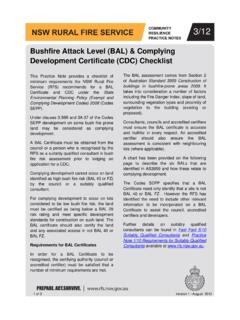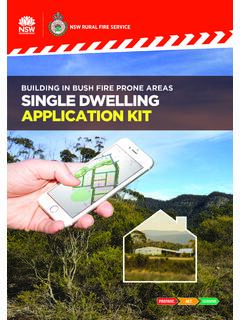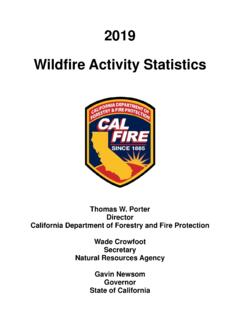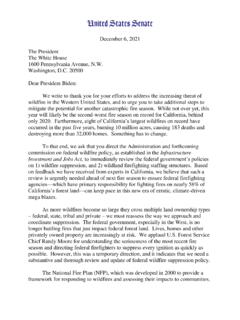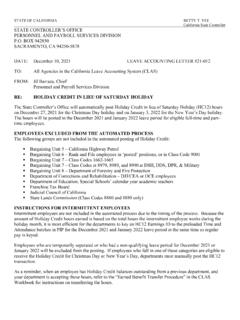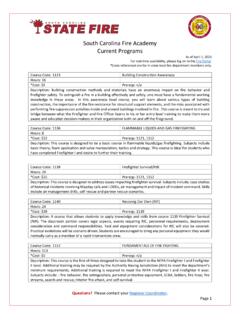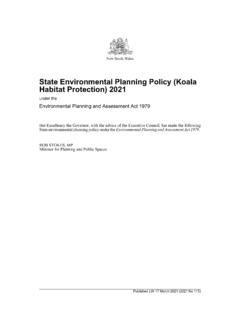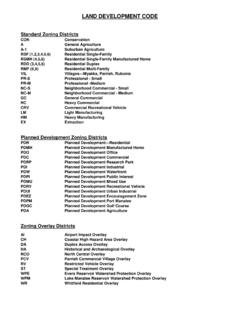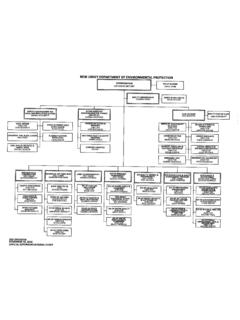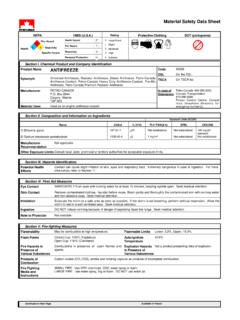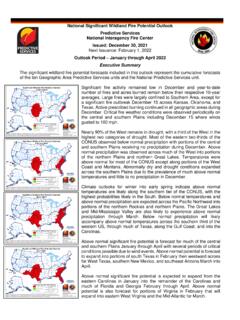Transcription of GUIDE FOR BUSH FIRE PRONE LAND MAPPING
1 GUIDE FOR BUSH fire PRONE LAND MAPPING VERSION 5b November 2015 NSW RURAL fire SERVICE 2 of 18 State of New South Wales through the NSW Rural fire Service 2015 The NSW Rural fire Service (NSW RFS) encourages the availability, dissemination and exchange of public information. You may copy, distribute, display, download and otherwise freely deal with this material for personal, in-house or non-commercial use, on the condition that you include the copyright notice State of New South Wales through the NSW Rural fire Service [plus year of creation or first publication] on all such uses. In the event that you wish to copy, distribute, display, download, store, or use this material for a purpose other than personal, in-house or non-commercial use, you must obtain permission from the NSW RFS by writing to the following address: The Commissioner NSW Rural fire Service Locked Mall Bag 17 Granville NSW 2142 You must also obtain permission from the NSW RFS if you wish to: charge others for access to the work (other than at cost); include all or part of the work in advertising or a product for sale, modify the material.
2 Or use any trade mark from this publication, including the NSW Rural fire Service crest or MyRFS logo. Disclaimer Statement While the material within this publication is current at the time of writing changes in circumstances after the time of publication may impact on the accuracy of the material. Individuals are responsible for ensuring they have the most current version of this publication. The information and material contained herein is general in nature and is intended for your use and information. The NSW Rural fire Service (NSW RFS) disclaims, to the extent permitted by law, all warranties, representations or endorsements, express or implied, with regard to the material contained herein.
3 The NSW RFS does not warrant or represent that the material contained herein is free from errors or omissions, or that it is exhaustive. Users should exercise their own skill and care with respect to its uses. You must not assume that this material will be suitable for the particular purpose that you had in mind when using it. The NSW RFS disclaims any liability (including but not limited to liability by reason of negligence) to the users of the material for any loss, damage, cost or expense whether direct, indirect, consequential or special, incurred by, or arising by reason of, any person using or relying on the material and whether caused by reason of, any error, omission or misrepresentation in the material or otherwise.
4 Users of the Website will be responsible for making their own assessment of the material and should verify all relevant representations, statements and information with their own professional advisers. The NSW Rural fire Service reserves the right to review this guideline. The information contained in this document is subject to change from time to time. NSW RURAL fire SERVICE 3 of 18 Contents 1 Definitions .. 4 2 Introduction .. 6 3 Legislation .. 6 4 Limitations .. 7 5 Monitoring and Review .. 7 6 Bush fire PRONE MAPPING Process .. 7 Process for Amendments and Certification of a Bush fire PRONE Land Map.
5 7 Process for Amendments and Certification of a Bush fire PRONE Land Map for Urban Release Areas (URA) .. 8 MAPPING Category 3 Vegetation .. 9 Interim Measures for MAPPING Urban Release Areas .. 9 Map for Commissioner s Approval .. 9 7 Steps to Prepare a Bush fire PRONE Land Map .. 10 Step 1 - Identification of BFPV .. 10 Methodology .. 10 Exclusions .. 11 Step 2 - Preparation of Bush fire PRONE Land Map .. 12 BFPV Buffer .. 12 8 Map Publishing, Data Management and 12 Copyright and Licensing .. 13 Custodianship and Data Brokerage .. 13 Metadata Requirements .. 15 Data Format and Structure.
6 15 File Naming Conventions .. 16 Data Quality .. 16 Depiction .. 16 Provision of Source Data .. 16 Delivery of BFPV Data to the NSW RFS .. 17 Files Sent Electronically .. 17 Files Sent by Post .. 17 9 References .. 17 Appendix 1 URA Application Form .. 18 NSW RURAL fire SERVICE 4 of 18 1 Definitions Agricultural land - A piece of land used for agricultural purposes including, but not limited to, dairying, pig-farming, poultry farming, viticulture, orchards, bee-keeping, horticulture, vegetable growing, the growing of crops of any kind, or any combination of these, but excluding forestry and plantations ( tea tree).
7 Bush fire hazard - The potential for land to carry a bush fire , utilising materials or fuels that can be ignited. Bush fire PRONE area - An area of land that can support a bush fire or is likely to be subject to bush fire attack, as designated on a bush fire PRONE land map. Bush fire PRONE vegetation map (BFPV) - A map prepared in accordance with this GUIDE and defining areas of vegetation by BFPV categories. This map may be prepared by Council or Urban Release Area developers. Bush fire PRONE land map (BFPL) - A map prepared in accordance with this GUIDE and certified by the Commissioner of the NSW RFS under section 146(2) of the Environmental Planning and Assessment Act 1979.
8 Bush fire risk evacuation map - A map developed by council in consultation with the NSW RFS which identifies land that is susceptible to evacuation difficulties in the event of a bush fire . Certain Special fire protection Purpose developments may be deemed inappropriate for these areas and may be prohibited. The map will identify these areas via cross-hatching. The bush fire risk evacuation map is held by the Department of Planning and Environment. A copy of this map also needs to be provided to the NSW RFS. Council/s - The council of a local government area (LGA). Designated bush fire PRONE land - In relation to an area, means land recorded for the time being as bush fire PRONE land on a bush fire PRONE land map for the area.
9 Digital data - The electronic datasets comprising the certified bush fire PRONE land polygons and the related metadata (in MapInfo TAB or ESRI Shapefile format). Grasslands - Grassed areas capable of sustaining a fire . Under Australian Standard 3959 Construction of buildings in bushfire- PRONE areas, identified as low open shrubland, hummock grassland, closed tussock grassland, tussock grassland, open tussock, sparse open tussock, dense sown pasture, sown pasture, open herbfield, and sparse open herb field. Grass, whether exotic or native, which is regularly maintained at or below 10cm in height (includes maintained lawns, golf courses, maintained public reserves, parklands, nature strips and commercial nurseries) are regarded as managed land.
10 LPI NSW Land and Property Information Managed Land - Managed land is land that has vegetation removed or maintained to limit the spread and impact of bush fire . It may include existing developed land ( residential, commercial or industrial), roads, golf course fairways, playgrounds or sports fields, vineyards, orchards, cultivated ornamental gardens and commercial nurseries. Most common will be gardens and lawns within curtilage of buildings. These areas will be managed to meet the requirements of an Asset protection Zone. NSW RURAL fire SERVICE 5 of 18 Remnant Vegetation For purposes of this GUIDE , remnant vegetation is vegetation that is considered to be of a lower bush fire risk (than Category 1 and Category 3) due to the size and/or shape of the parcel.
